Content
Downloads
Learning Experiences: Design & Delivery
Overview
Designing and delivering learning experiences that are unique to every individual is a crucial component of effective learning. This requires the educator's role to become the designer and co-creator of learning experiences – someone who can guide the learning. Learning needs to be inspired by purpose, grounded in experiences, highly personal and connecting the learner to their wider community.
Designing and implementing learning experiences is a core process for the learning guide. It is best undertaken collaboratively – where multiple perspectives and input enrich the possibilities of any experience. The applied use of data can help identify individual or collective learning deficits, enabling the learning guides to create and co-create experiences to target these deficits. Above all, learning experiences must be both authentic and deeply engaging.
Executive Summary
The fourth industrial revolution provides a welcome opportunity to challenge and refresh how learning is designed and delivered. In an information age, supported by technology, content can become a by-product of learning where the acquisition of skills and competencies can take precedence.
Technology enables opportunities for individual learning which can be inspired by unique purpose. Learners of all ages could thrive in a context where they can determine what they wish to learn, and this immediately provides the motivation necessary for individuals to fully engage. A learning community should therefore ensure that the learning experiences it designs and delivers can be unique and relevant to suit each individual.
The days of teachers designing and delivering their own programmes for learning for a single class must be discarded and replaced by new collaborative design. A team of learning designers in a new learning paradigm can essentially co-create learning with their learners - and they can guide the learning, not lead it. This is a step away from the traditional teacher-at-the-front scenario.
The four key components to consider when designing learning experiences are; collaborative opportunities exist; individual passions and needs are met; mandated requirements are covered; and transdisciplinary learning opportunities are possible. Aside from meeting mandated requirements, the other three key components are critical factors to inspire and cultivate the creativity and innovation skills needed to thrive in an agile world.
Typically, teacher training courses have encouraged educators to design learning programmes that cover a mandated curriculum, which often focuses on content. A common problem in this scenario is the overcrowded curriculum - too many competing subjects, perspectives and priorities to be merged into one cohesive programme. Individual learners must become empowered to design their own learning programme that they want to fully engage with.
If the overarching goal in a new learning paradigm is to build the capacity for self-determined learning, then learning design must reflect this. Lifelong learning is required to ensure continued success for every individual long after formal education ceases, and the learning community must set itself up to enable learners to develop the skills and competencies that can enable them to design their own learning and cultivate their own life paths.
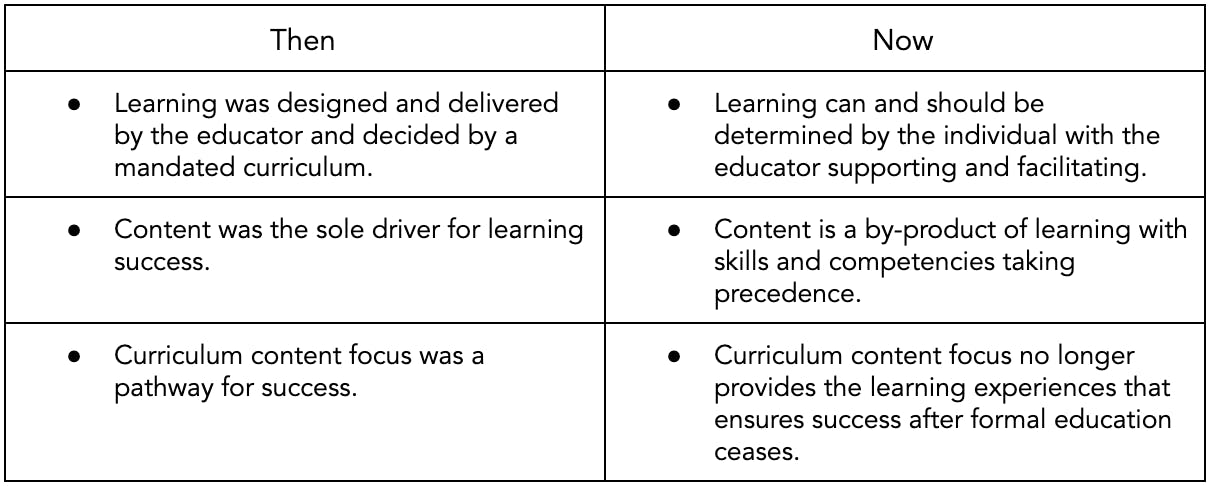
Starting Questions
- How much input do learners in the learning community have on the design and delivery of their learning?
- Can learners fully engage in learning that is designed for them?
- How should educators set up their learning community to ensure the learners are represented in the design for learning?
- How might learning communities use technology to encourage learning experiences that are highly individualised?
- How can a learning community develop itself to become exceptional designers of learning experiences that suit 21st century learning?
- Does the community wish to explore learning design which extends the common features of the existing, traditional paradigm? (e.g. timetables/schedules; ages/stages; defined/spontaneous learning)
Key Initial Actions
- Invite people to join a ‘guiding coalition’ who will promote and lead change.
- Initiate a collective envisioning process via dialogue, evaluation, research and observation to generate a vision statement in relation to pedagogic approaches.
- Create dispersed mini-teams to evaluate learner progress and feedback challenges and successes to the wider team
- Target print or digital messaging around the community - aim to reinforce a positive culture of learning in every image or communication.
On-going Actions
- Endeavour to free up experienced staff to become in-house pedagogic coaches - able to support any staff who wish to design and deliver learning in new ways.
- Initiate regular ‘share’ sessions where people share their successes or challenges collectively - aim to foster a safe culture for experimentation.
- Connect with similarly minded organisations beyond the immediate community, and with universities and industry.
- Promote a culture of observation, reflection and prototyping.
- Conduct regular surveys of the subsections of the wider community with the intention of using such feedback directly for improvements in design for learning.
Find out more
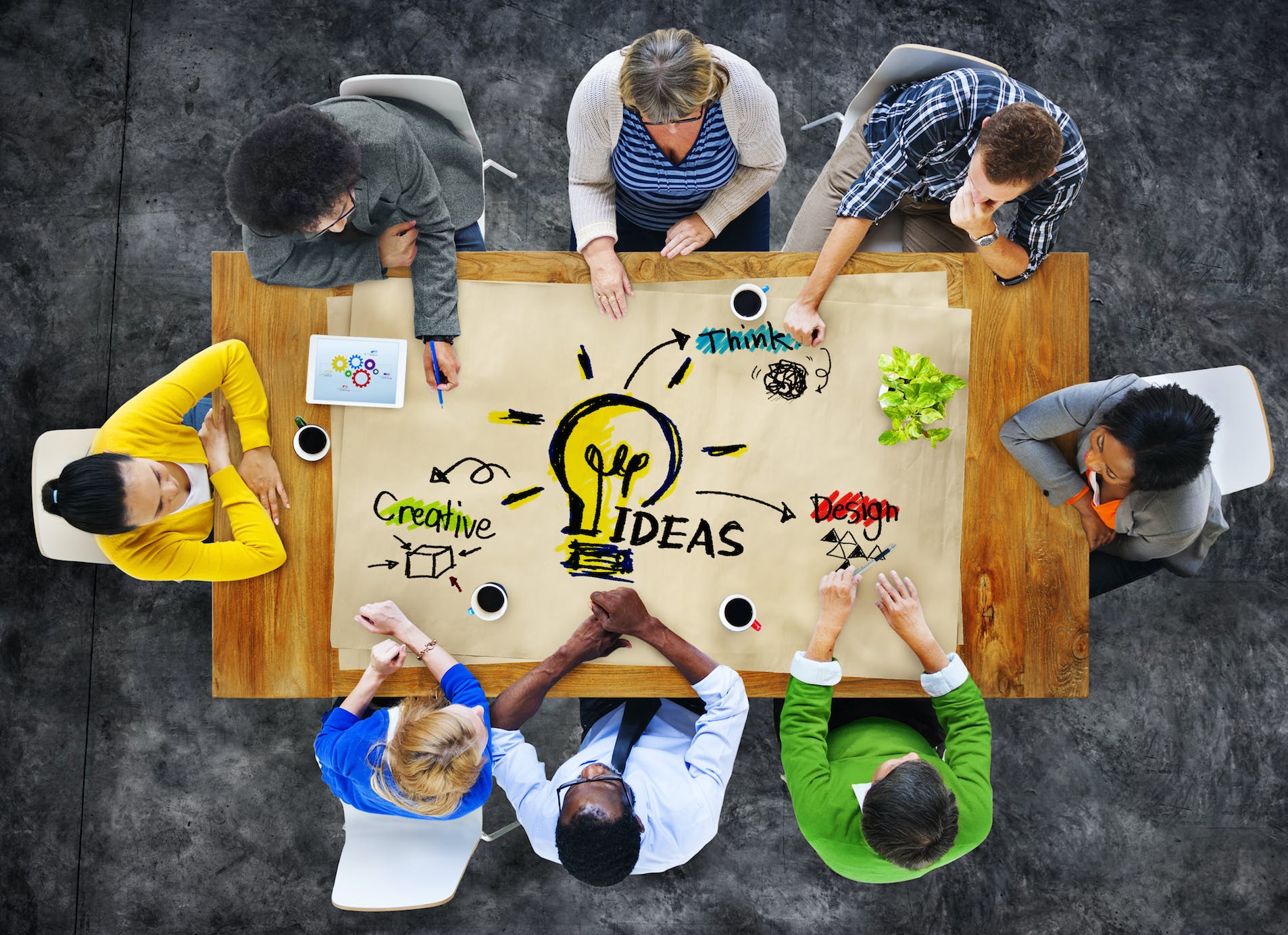
Picture this...
Picture this - a team of teachers who no longer have to create individual programme masterpieces, but spend their preparation time to collectively design a season of learning experiences, with the intention of sparking strong engagement with over 180 learners - this is the collective responsibility of the team.
Today one teacher takes the process lead, the others will be rostered to have their turn over a two year cycle. To initiate the process, the team are weaving ideas and thoughts together, referencing mandatory curriculum requirements and then engaging in plenty of ‘blue sky’ thinking as they imagine crazy concepts in potential reality. I hear ‘what if?’ repeated on multiple occasions as I watch professionals fully engaged in what I imagine they became teachers to do - to share their passion for learning with colleagues in a highly creative and productive process.
Together they weave a framework for a ten-week cycle of rich learning experiences that would activate deep learning within their learning community. Among many ideas, they are drawing different strands of discipline-based and transdisciplinary learning together, based around concepts of global inequality, natural disasters, budgeting and expressive writing.
What a privilege to watch such a team, comprised of newly qualified to highly experienced professionals - all with evident equality of unique ideas!
"Maybe we should focus on learning as a process of invitation, not intervention."
Sasha Barab
Key Ideas
- A new learning paradigm needs fresh frameworks for viewing how learning might be best facilitated
- The days of individual teachers developing their own programmes of work for a single class context need to go - replaced by collaborative co-design of learning experiences
- Learning experiences should promote the understanding, development and application of core concepts, skills and competencies
- Design thinking processes, starting with empathy, are useful when designing cohesive and protracted learning experiences
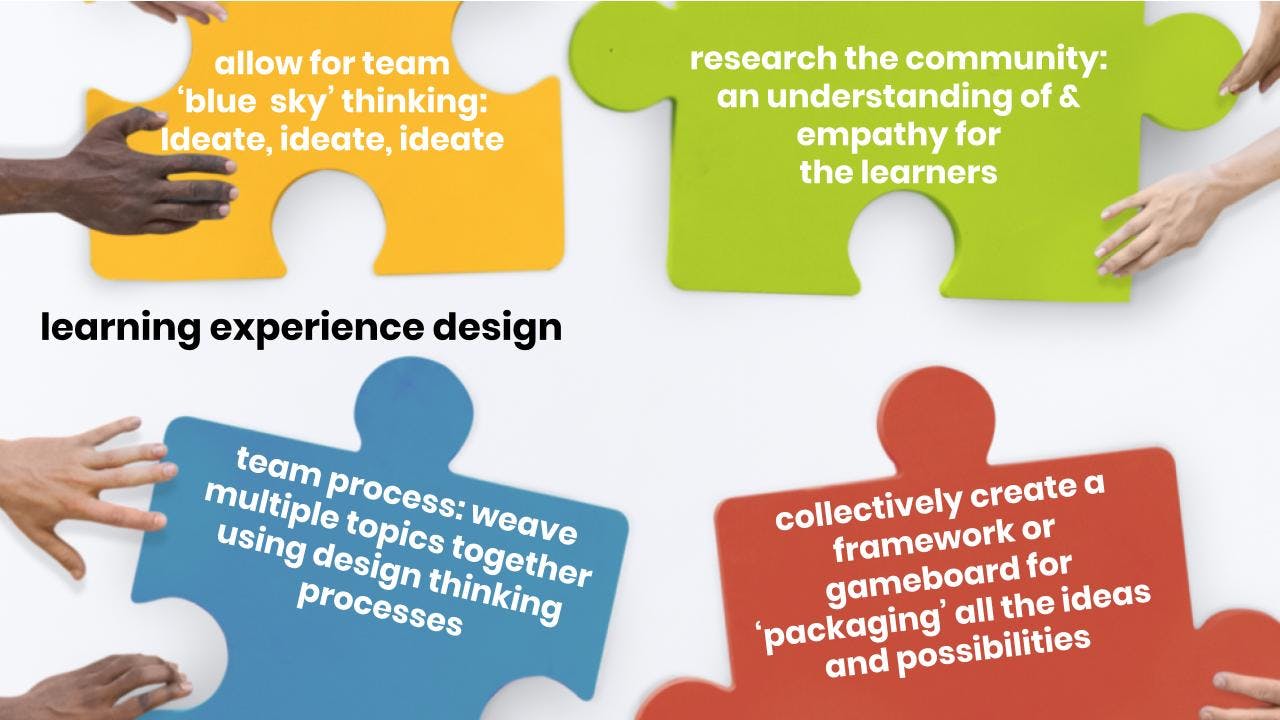
(image credit: Stephen Harris & Shutterstock)
A new learning design
Why a new learning design?
A simple question - with an extremely challenging answer. If we keep tinkering with the existing systems of mandated curricula, essential content and standards-based assessment (in whatever form or at whatever level we choose that), then all we are really doing is re-painting an old ship. We are rearranging the deck chairs on the Titanic. If we truly believe that we have entered a new era of human history - the fourth industrial revolution, then we need to recognise that this deep paradigm shift demands a change in the learning experience and in how we educate future generations in order for them to be able to thrive. We need to reconsider how we learn, for what purpose will we learn and what might this look like? This needs to occur within a context where there is no broadly accepted or understood answer. It will require educational mavericks to co-create possible new learning designs.
This element of a change process in the learning experience is probably the most complex, the most critical, the most challenging and the least easily understood. This article will keep the conversation at a conceptual level and not endeavour to provide a specific or contextualised roadmap for change. The reason being that a new design for learning needs to be directly understood by practitioners who are willing to forge new and uncharted territory with learning design - and most likely spend a lot of time ‘failing forward’.
Utopia
If we were to picture a learning utopia that matched this paradigm shift, then it would most likely include learning experiences with independent and interdependent learning capabilities. Learners of all ages would be thriving in a context where they are determining what needs to be learnt in order to tackle the global challenges that we face. There would be copious amounts of collaboration, conversation, respect and teams-at-work. Technology would provide information, options and extend the capacity of the human work force.
But we will never likely reach a utopia, at least not universally. And people will all be at different places in their journey to self-determined capability as learners. So this is where dialogue around a new design for learning experiences comes in. There are a number of questions that must first be posed and answered. Following this is a range of considerations. Some of the potentially more common ones are outlined here.
Questions:
- Does the community exist or want to exist within a system or outside a system? What are the implications of this for the design of learning?
- Will the community want to explore potential learning design aside from common features of any existing paradigm? (e.g. timetables/schedules; ages/stages; defined/spontaneous learning) or will the extent of design be initially limited?
- How will the community handle the development of core concepts and broad literacies?
- Will the learning design be intradisciplinary, cross-disciplinary, multidisciplinary, interdisciplinary or transdisciplinary?(1)
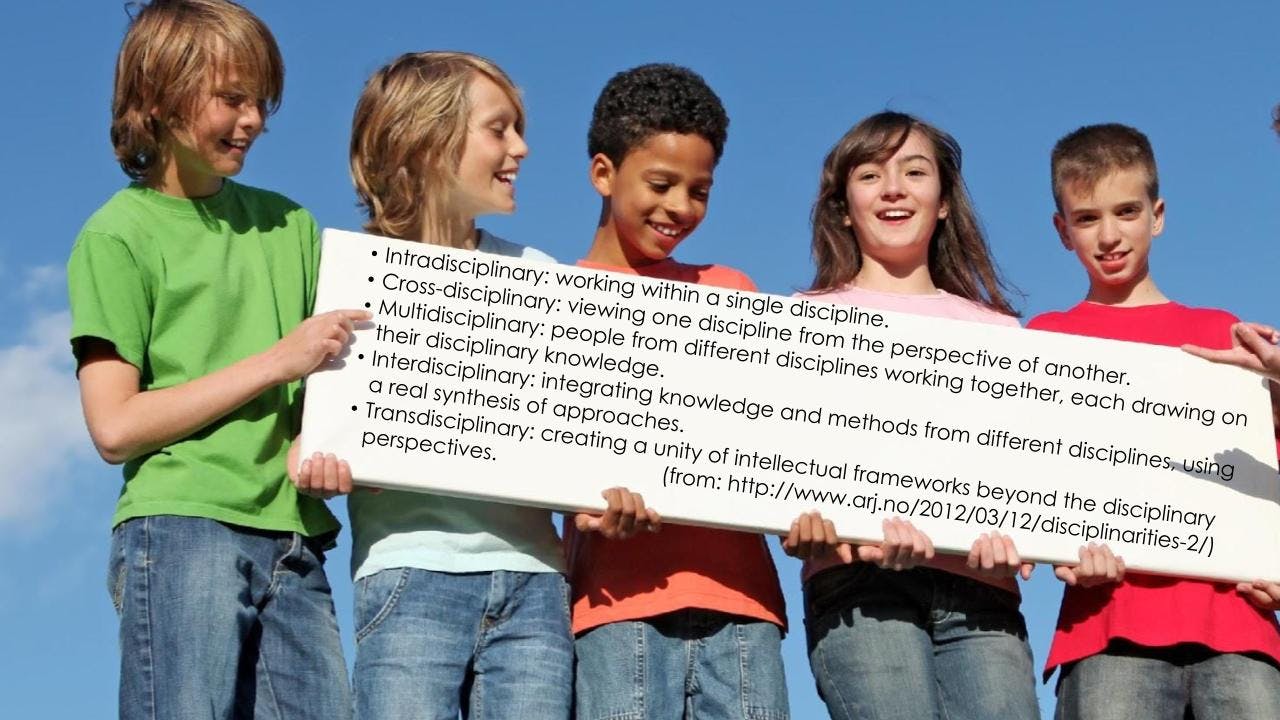
Further Considerations
1. Pedagogic vision
Is there a clearly articulated and understood shared vision for what the learning will look like in the community? Is this vision a reshaping/rewording of existing models or is it genuinely a new paradigm? Is there a strategic vision for pedagogic growth in the community? If so, what is it?
2. Workforce capacity
Does the workforce have the capacity and ability to implement a new paradigm? If not, is there an ongoing strategy for growth and development?
3. Team capacity
Is there a guiding coalition with the capacity to steer change? Will there be consistent experience of a new paradigm or will that be dependent on who is responsible for the learning? Can you identify a team that is well-aligned with the direction and capable of working in and as a team?
4. Learning ecosystem and resourcing
Is there a defined learning ecosystem? Does the community have the resources to make some fundamental shifts in the way the community learns?
5. Stages of learner capacity
Is it possible to identify and define where different people are on a journey towards independent and interdependent learning? How will the community cater for people at different stages of independence and interdependence? What is the place of learner agency?
6. Progression: mastery or other determinants?
How might mastery be handled in a new paradigm? Will the changemakers be able to make a direct and positive impact with their ideas?
7. External constraints or opportunities
Does the community exist within a system that will impose external constraints and mandated parameters? If so, how might the community explore avenues for creativity within those parameters? How might this vary from stage/age to stage/age? Would the community want to operate both within and outside external parameters for different groups? If so, what might this look like?
8. The place of content and direct instruction
Has the community a common view on the place of content? Is there (or does there need to be) any notion of core content or concepts that need to be covered? How will people access information? What is the place of direct instruction? Is there community-wide consensus on this?
9. Relative freedoms
Does the community have freedom to develop learning experiences from outside the jurisdiction of any external body? If so, will the community move all learning programmes to the same level of independence?
Why the complexity?
The creation of a design for learning and/or the creation of learning experiences is not something that most teachers have had experience or training in. As well, as just outlined, there are also multiple philosophical questions connected to the process.
Apart from this, the process of bringing potentially disparate components together in a new framework in order to form one cohesive framework for learning, will be very time consuming and will most likely require perpetual focus, adjustments and evaluation.
Traditional Lesson Programming vs Designing Learning Experiences: an overview
The key difference in approaches relates to a shift from programming lessons to designing learning. The argument for the ‘programmed’ approach to learning rests on a viewpoint that suggests there is a body of content (knowledge) that must be conveyed and absorbed for a person to function effectively in a community. The opposing perspective would suggest that this often-labelled ‘spoon fed’ approach has little effective long term impact.
Typically, teacher training courses will provide a grounding in programming lessons where an individual teacher will merge multiple demands into one programme. In many instances, such programmes are submitted to a supervisor who will assess whether the mandated curriculum, content and indicative times have been adequately met. A common complaint heard in many countries is that of the overcrowded curriculum - too many competing subjects, perspectives, priorities to be merged into one cohesive programme.
The following table outlines the key aspects of two ways of viewing the learning process:
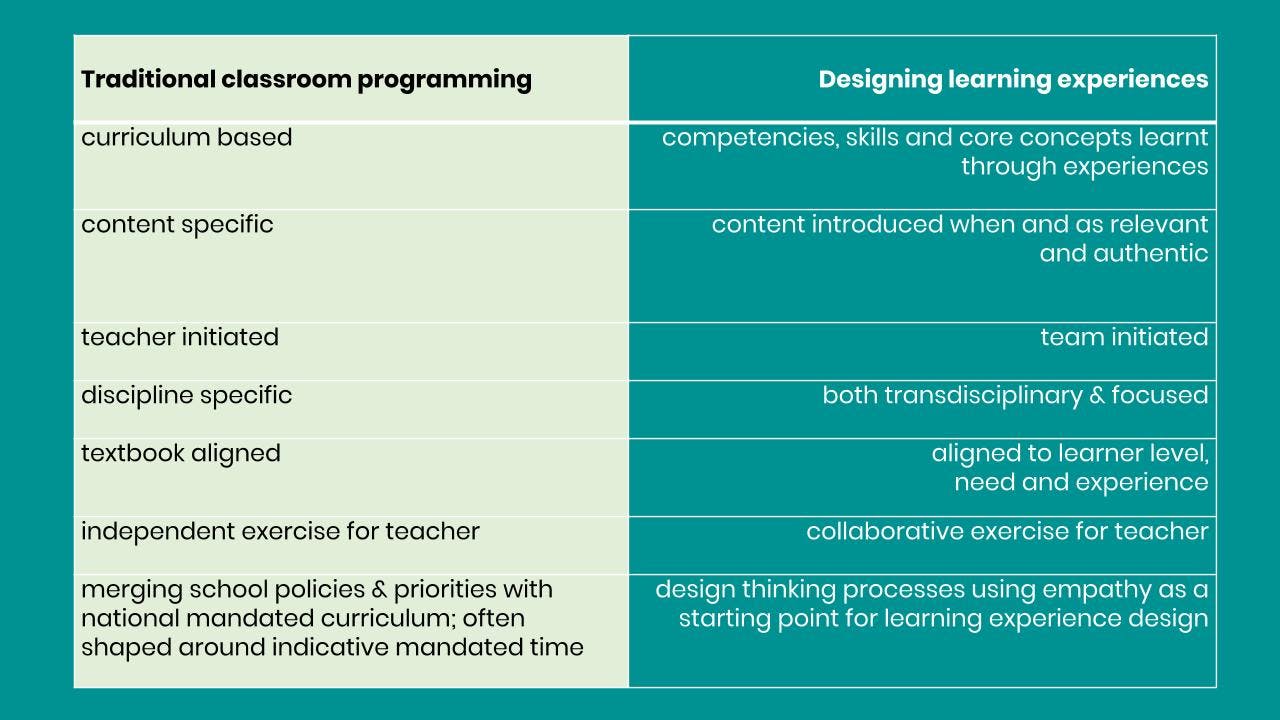
(table credit: Stephen Harris)
A Different Process
Learning design and delivery based around the concept of learning experiences is an aspect of a new paradigm for learning that requires high levels of Toffler's learning, unlearning and relearning for adults - both teachers and parents alike. It is not that content and knowledge becomes discarded, rather the process for learning applies a version of design thinking geared towards education.
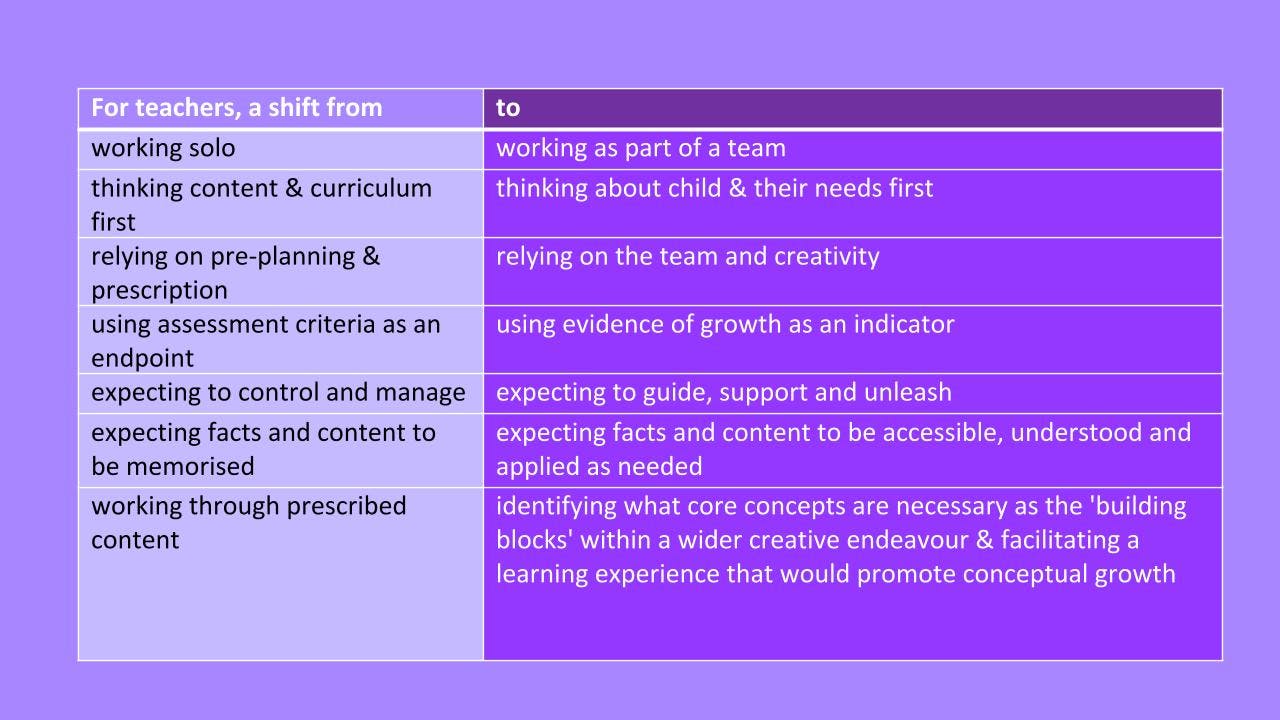
(table credit: Stephen Harris)
How the process of designing for learning works conceptually
The process starts with often competing concepts (as illustrated below)
- The learners with their diverse passions, experiences and needs;
- Transdisciplinary thinking: with the goal of enabling self-determined learning and weaving multiple areas into one learning game-board;
- A collaborative learning experience creation process, using empathy-initiated insight and design thinking processes
- Any externally mandated requirements such as indicative time and national curriculum.
Design: Starting Point
The process is best initially undertaken with all team members providing input. Ideally it involves plenty of ‘blue sky’ thinking and wild ideas. The design process will capture what might work well and weave these into a coherent design. At the centre of the process is an empathy for the learners. The process should aim to find a topic and potential pattern of experiences that are broad enough to be taken in multiple directions; flexible enough to be spontaneously adapted; curiosity-inducing, while enabling any mandatory requirements to be met. The framework might provide the majority/total focus for the learners at any given time, or if working within tight external constraints, can be more limited timewise.
(Resources such as Design Thinking for Educators are invaluable for this process https://designthinkingforeducators.com).
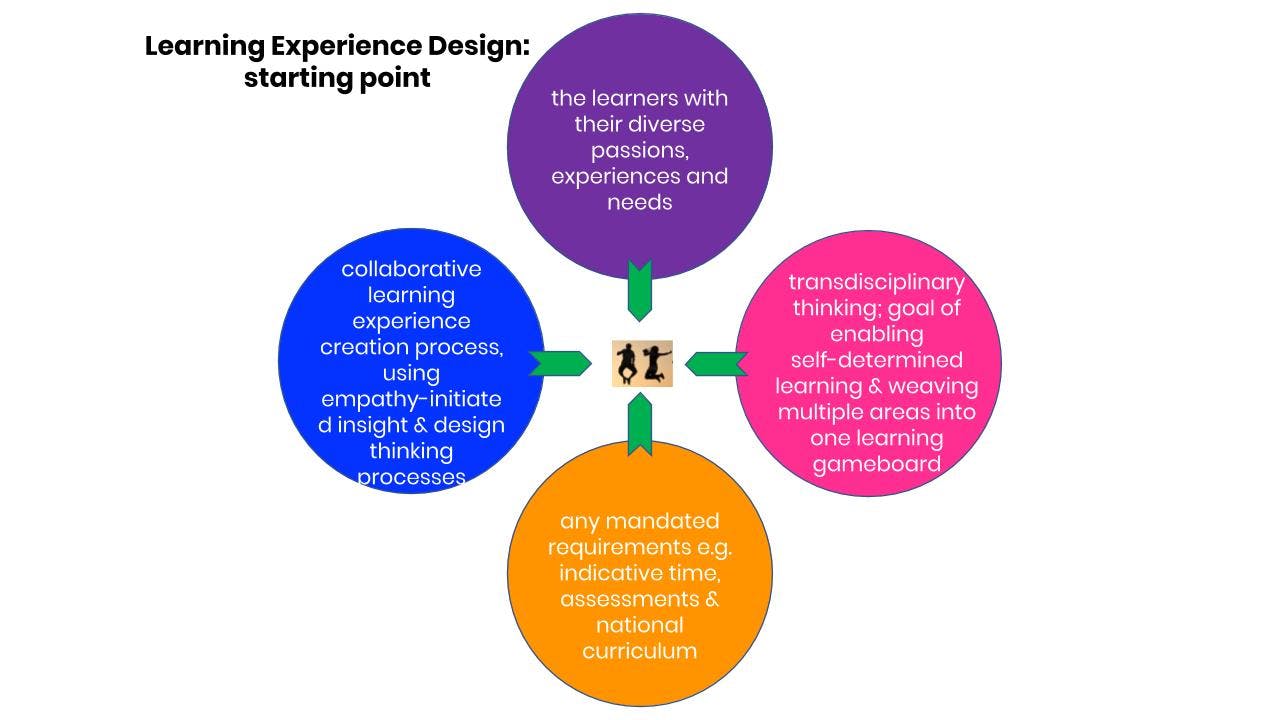
(image credit: Stephen Harris)
You might need to consider
If working with children who have been used to more prescriptive approaches in curriculum and content, the frameworks can initially be flexed to provide a visible structure for the learner. Over time, these can be relaxed in order to prompt more self-determined learning.
The Aim
The aim of the process is to gradually draw the competing components together in order to meet all known parameters, while creating a blueprint or gameboard for learning. There is no intention in this overview to become specific because the outcome should necessarily be different in every context. It describes a process only - the gradual collective creation of a cycle of learning that possibly focuses on a meta-theme relevant to any specific societal and global area of activity or thought.
Learning Experience Design
Using a recurrent and collaborative process, the different perspectives are gradually brought together into one cohesive overarching learning experience, with the capacity for multiple directions:
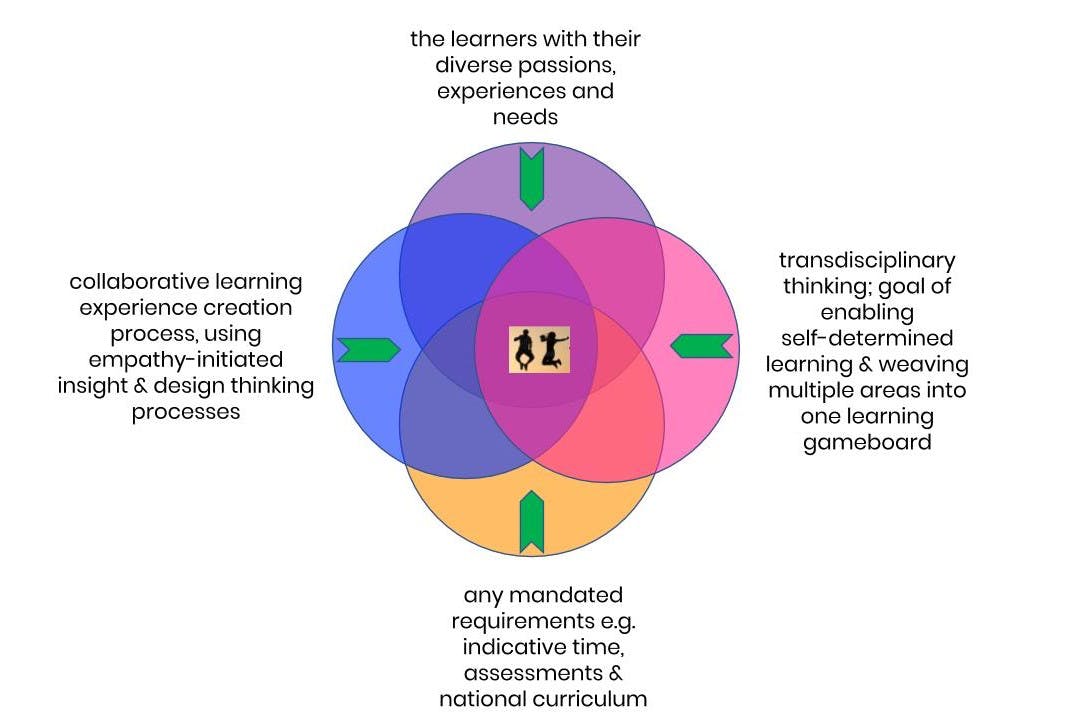
(image credit: Stephen Harris)
The End Point
The model presented is as stated, very broad with little detail beyond the concept. This is because it provides an overview of the concept only. Every context and team are different. The stage/age of the learners will impact all the choices and it will vary depending on whether the programme is part of the wider mandated curriculum framework or perhaps whether creative scheduling has enabled time to be freed up that sits outside any mandated content and timetable.
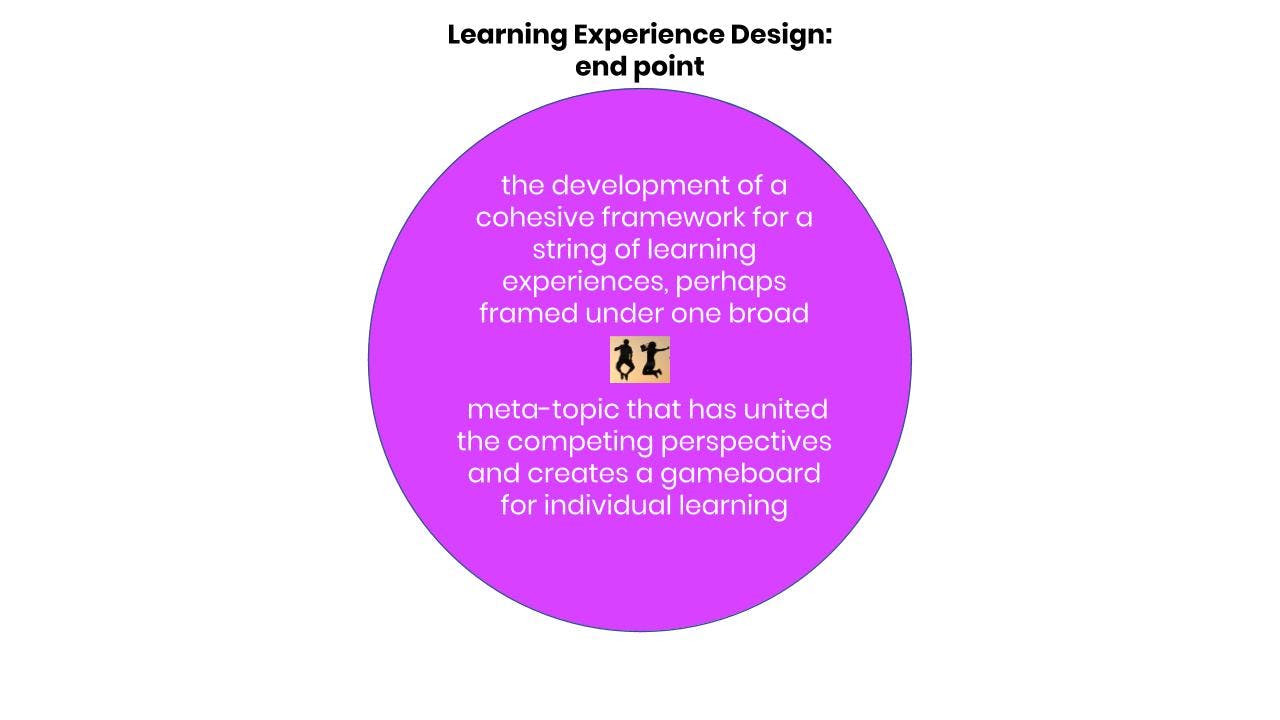
(image credit: Stephen Harris)
Some schools or learning communities have found it useful to be more specific in initial versions, so as to provide sufficient structure for teachers/learning guides to comprehend. An example might be to use a grid created by listing Gardner’s multiple intelligences against Bloom’s taxonomy. Into each intersecting square, the created task can arise out of the multiple intelligences framework and Bloom’s hierarchy of difficulty. Such a game-board approach is a structured way of exploring the potential opportunities of any design for learning.
Decision Hierarchy for learning Design
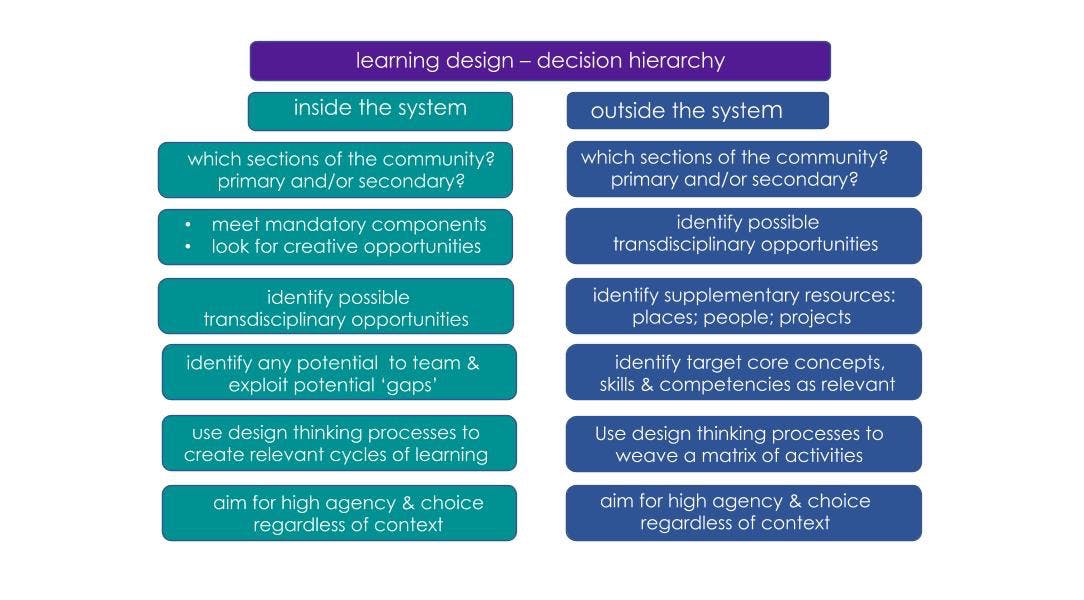
(table credit: Stephen Harris)
"... the core value exchange—learn this stuff and I’ll give you a grade—is just a bad bargain."
Tom Vander Ark
A final thought
In the bigger picture we are at a point in time when different groups are recognising that the education systems are producing graduates not ‘fit for purpose’. No longer is a tertiary qualification an entry in the workforce. The era of international testing is also being increasingly questioned(2) and the OECD has a project looking beyond the current strategies into what is needed: The OECD Learning Compass 2030 defines the knowledge, skills, attitudes and values that learners need to fulfil their potential and contribute to the well-being of their communities and the planet(3).
This shift in the wider society provides an outstanding opportunity for a move away from individually programmed lessons to collectively created learning experiences. Technology already exists that can support this reorientation, and if implemented effectively, will offer the essential ingredients that can foster the skills and competencies of all learners into the 21st century. Emerging learning design experiences will pioneer change long into the future, and from its foundations, can assist to navigate and inspire the next generation of educators who will need to design learning experiences fit for their time and purpose. The key to driving new learning design is to utilise the key skills that a new generation need - creativity, problem-solving, critical thinking and collaboration and for educators to approach new designs for learning with agility and creativity, willing to fail, but more willing to persist.
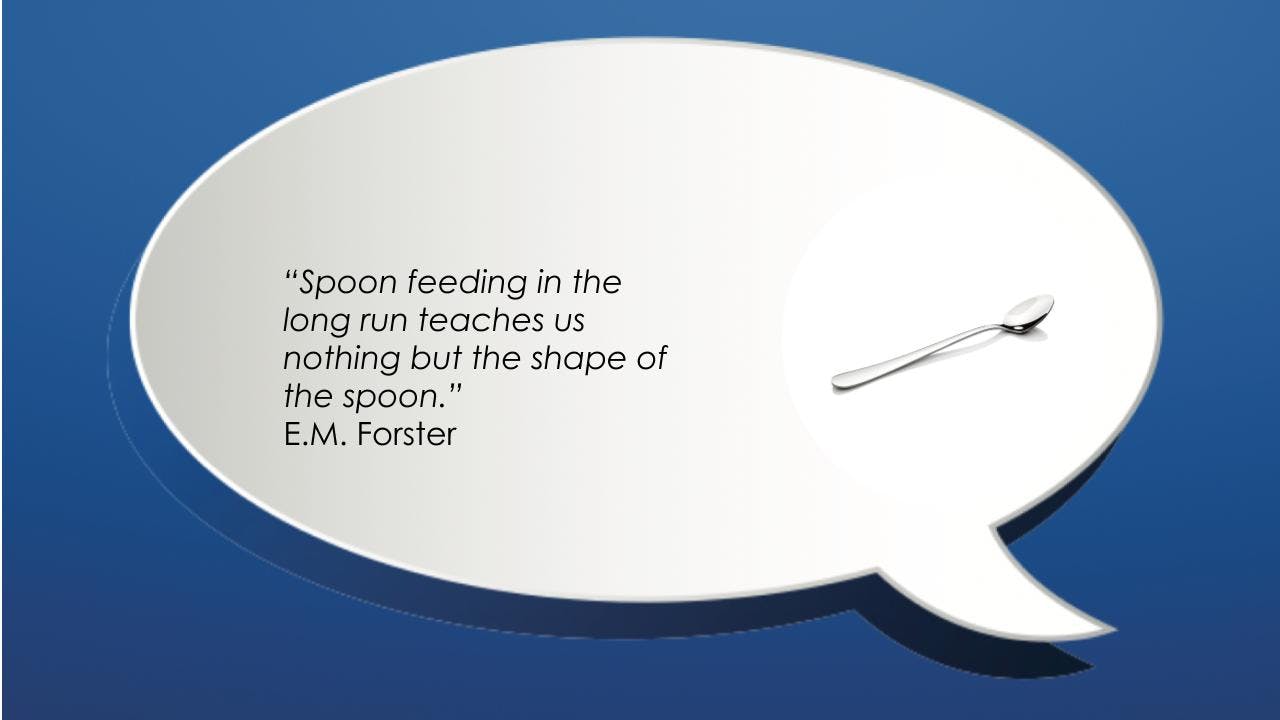
Act now
Today’s challenge in a knowledge economy, is not finding information, but finding the correct information and using it to support human development. The world of education is saturated with a plethora of content regarding pedagogy, theory, skills, competencies and methods, and within this world is a broad scope of various approaches and opportunities for delivering learning. Designing new curricula fit-for-purpose, requires a multi-faceted response from various key stakeholders, not just in the education world, but within society. Most importantly, there is no single, correct way to designing and delivering new learning experiences.
At the macro level:
- Initiate a collective envisioning process via dialogue, evaluation, research and observation to generate a vision statement in relation to pedagogic approaches
- Clearly communicate the vision to encourage alignment and participation
- Invite people to join a ‘guiding coalition’ who will promote and lead the change
- Encourage all sub groups (sections, faculties, units) to interpret the pedagogic vision into their sphere of activity; link organisational resources to these groups
- Endeavour to free up experienced staff to become in-house pedagogic coaches - able to support any staff who wish to design and deliver learning in new ways
- Initiate regular ‘share’ sessions where people share their successes or challenges collectively - aim to foster a safe culture for experimentation
- Endeavour to minimise meetings and maximise professional growth opportunities
- Connect with similarly minded organisations beyond the immediate community
- Promote a culture of observation, reflection and prototyping - the more a community becomes aware of other projects or programmes, the stronger the dynamic for change will become
- Conduct continued research that will highlight emerging learning innovations and create new learning opportunities
- View the need to grow collaborative capacity as one of the core functions of the community
- Cooperate closely with industry and universities
At the micro level
- Support all endeavours to design learning experiences from new perspectives
- Enable ongoing and regular observation of ‘best practice’ both within the community and elsewhere
- Create teams to evaluate different emergent frameworks involving competencies, skills and core concepts; empower such teams to develop a framework suited to the exact context of the community
- Create dispersed mini teams to evaluate learner progress and feedback challenges and successes to the wider team
- Encourage all adults to pursue and model their own professional or personal passions e.g. if there are artists, musicians, scientists, researchers, writers etc within the community, create strategies to make this visible to the wider community
- Target print or digital messaging around the community - aim to reinforce a positive culture of learning in every image or communication
- Conduct regular surveys of the subsections of the wider community with the intention of using such feedback directly for improvements in design for learning
- Capture effective processes at the micro level that can be seen to have a positive impact on learning and share these
- Grow the ability of all guides to create and use a virtual learning space that mirrors the physical spaces
- Create strategies that enable differentiated approaches to learning: aim to progressively encourage self-determined learning
- Prototype the measurability of skills and competences using qualitative approaches
- Cooperate closely with all stakeholders, whether internal or external
Examples in action
The following examples demonstrate different approaches to new designs for learning. Some include frameworks and curriculums for skills and competencies, while others exemplify the use of learning methodologies to drive effective learning through which skills and competencies can be acquired.
Aspirations Academies
Aspirations academies are “committed to providing learners with the knowledge and skills required to succeed in the 21st century. Core Learning and applied transdisciplinary learning will be seamlessly integrated within the school day”.
Col·legi Montserrat
“A place where multiple intelligences are the main driver of change and of the transition towards cooperative learning, and a project-thinking culture.”
Aotawhiti School
“The Discovery1 primary school in Christchurch, New Zealand, designed the organisation, methodology, and evaluation for the community's official curriculum. Parents, students, and teachers, along with other education professionals and experts, worked together to redesign their school.”
Northern Beaches Christian School
Northern Beaches Christian School has explored the design of different frameworks for learning for over a decade. This has occurred in a context that is ‘within the system’. The approaches differ depending on the stage/age of students.
Escolas Lumiar
Escolas Lumiar are three primary schools that share the same pedagogical motto: “Interactive and inter-disciplinary mosaics are the basis for building knowledge”. At these schools there are no lessons, no fixed schedules, and no old-school teachers –as they put it.
Big Picture Learning
“A school whose vision is that all students live lives of their own design, supported by caring mentors and equitable opportunities to achieve their greatest potential.”
New Tech Network
“The shared vision for student success is college and career readiness for all students."
Envision Education
“Envision Education’s model is realised by students regularly presenting and defending their academic work, their growth, and their readiness to advance.”
Further reading
Download the file here.Special thanks to the following co-creators:
Stephen Harris
Co-Founder & Chief Learning Officer
Bryan Gibson
Research and Paradigm Design
